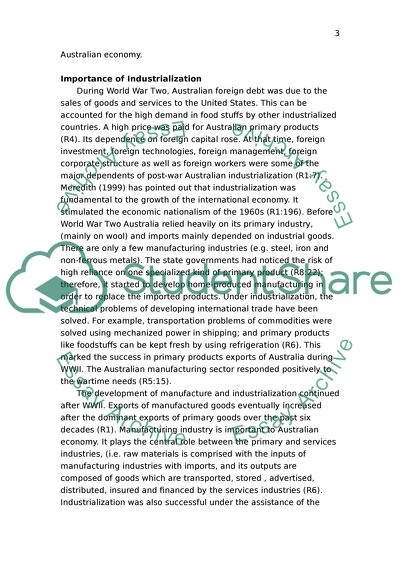Cite this document
(“How successful was industrialization in Australia over the period 1950 Essay”, n.d.)
How successful was industrialization in Australia over the period 1950 Essay. Retrieved from https://studentshare.org/miscellaneous/1567667-how-successful-was-industrialization-in-australia-over-the-period-1950-to-1973
How successful was industrialization in Australia over the period 1950 Essay. Retrieved from https://studentshare.org/miscellaneous/1567667-how-successful-was-industrialization-in-australia-over-the-period-1950-to-1973
(How Successful Was Industrialization in Australia over the Period 1950 Essay)
How Successful Was Industrialization in Australia over the Period 1950 Essay. https://studentshare.org/miscellaneous/1567667-how-successful-was-industrialization-in-australia-over-the-period-1950-to-1973.
How Successful Was Industrialization in Australia over the Period 1950 Essay. https://studentshare.org/miscellaneous/1567667-how-successful-was-industrialization-in-australia-over-the-period-1950-to-1973.
“How Successful Was Industrialization in Australia over the Period 1950 Essay”, n.d. https://studentshare.org/miscellaneous/1567667-how-successful-was-industrialization-in-australia-over-the-period-1950-to-1973.


